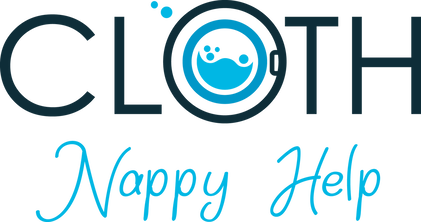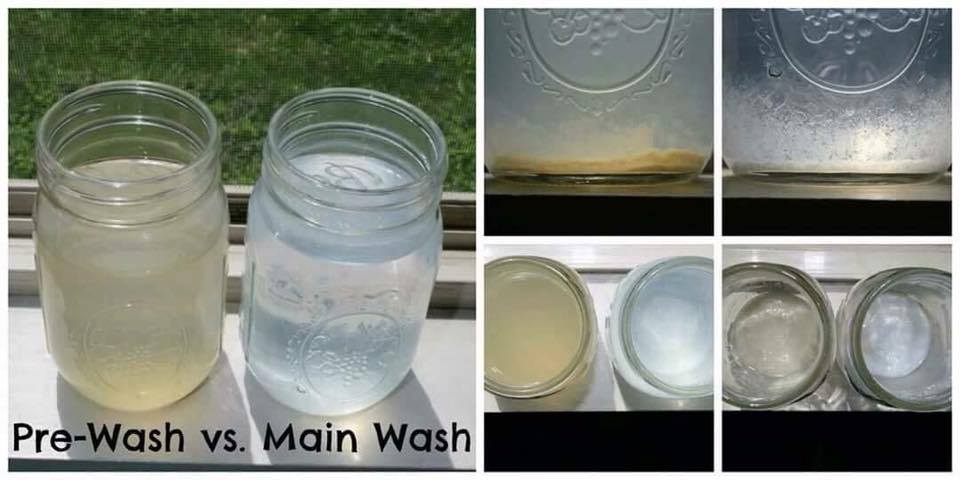A modern nappy wash routine
If you've been reading online, you might be feeling mighty confused about how to wash your modern cloth nappies. You may have read terms such as dry pail, wet pail, laundry booster, hot wash, full detergent, half detergent. You may have seen told to avoid the tumble dryer, and then seen recommendations to use the tumble dryer to make nappies soft. Do you choose mainstream detergent, eco detergent, laundry booster, laundry soap? Hot wash, cold wash, warm wash, boil wash... where do you start?
A lot has changed in the nappy washing world in recent times, and modern day nappy wash routines are adapted from standard laundry practice guidelines for heavily soiled laundry. The basics of a nappy wash routine are simple and easy to implement at home.
An effective cloth nappy wash routine has 4 steps:
This might sound like a long process, but the reality is that your washing machine does the hard work for you so that you can set and forget and come back later to hang out your beautifully clean nappies. There's no need to soak. Soaking will degrade the waterproof outers of your nappies and is a drowning hazard.
Why so many steps? Can't you just wash the nappies once?
Each step in the wash routine has a specific purpose which you can read about below. If you skip steps, you can easily end up with stains or smelly nappies.
Pretreat
Pretreating is optional. Some parents will need to pretreat, as some babies have stainy poops. After rinsing the poopy nappies (or spraying the poop into the toilet with a nappy sprayer), rub a laundry soap such as Sard/Sunlight/Velvet into the fabrics until they're nice and bubbly. Pop your nappies back into the pail until you're ready to wash them.
Prewash
The prewash is a short wash cycle that removes excess soiling from your nappies, so that you can complete your main wash in clean water. You can see the difference in wash water quality in this photo- the prewash water is really dirty and won't result in a good clean, which is why your prewash needs to be followed by your main wash.
Your prewash is a short wash cycle (on most machines there will be an option for a quick or regular cycle that's around 30-60 minutes long). Warm to hot water (maximum 60 deg) will provide a more effective wash than cold.
If you've been reading online, you might be feeling mighty confused about how to wash your modern cloth nappies. You may have read terms such as dry pail, wet pail, laundry booster, hot wash, full detergent, half detergent. You may have seen told to avoid the tumble dryer, and then seen recommendations to use the tumble dryer to make nappies soft. Do you choose mainstream detergent, eco detergent, laundry booster, laundry soap? Hot wash, cold wash, warm wash, boil wash... where do you start?
A lot has changed in the nappy washing world in recent times, and modern day nappy wash routines are adapted from standard laundry practice guidelines for heavily soiled laundry. The basics of a nappy wash routine are simple and easy to implement at home.
An effective cloth nappy wash routine has 4 steps:
- Pretreat (optional- great for stain prevention)
- Prewash (short wash in warm or hot water)
- Main wash (long wash in warm or hot water)
- Dry
This might sound like a long process, but the reality is that your washing machine does the hard work for you so that you can set and forget and come back later to hang out your beautifully clean nappies. There's no need to soak. Soaking will degrade the waterproof outers of your nappies and is a drowning hazard.
Why so many steps? Can't you just wash the nappies once?
Each step in the wash routine has a specific purpose which you can read about below. If you skip steps, you can easily end up with stains or smelly nappies.
Pretreat
Pretreating is optional. Some parents will need to pretreat, as some babies have stainy poops. After rinsing the poopy nappies (or spraying the poop into the toilet with a nappy sprayer), rub a laundry soap such as Sard/Sunlight/Velvet into the fabrics until they're nice and bubbly. Pop your nappies back into the pail until you're ready to wash them.
Prewash
The prewash is a short wash cycle that removes excess soiling from your nappies, so that you can complete your main wash in clean water. You can see the difference in wash water quality in this photo- the prewash water is really dirty and won't result in a good clean, which is why your prewash needs to be followed by your main wash.
Your prewash is a short wash cycle (on most machines there will be an option for a quick or regular cycle that's around 30-60 minutes long). Warm to hot water (maximum 60 deg) will provide a more effective wash than cold.
Main Wash
The main wash is a long wash cycle that gives your nappies a really thorough clean. Use the longest cycle on your machine. For most front loaders, this is around 2-3 hours. For top loaders, this can vary from 1-3 hours. You can find example wash routines for front loaders and top loaders on this site. Complete your main wash in warm to hot (40-60degC) water for best results.
Dry
You can dry your nappies outdoors, indoors or in the tumble dryer. If you're drying outdoors, ensure your nappy covers/shells are in the shade as the waterproofing can be damaged by the sun. If you're drying in the dryer, you may like to dry your inserts only, and dry the shells on an airer or put them in for 10 minutes at the very end of the cycle. The dryer can melt or delaminate the waterproof outers, so if you're drying all in ones be sure to limit the heat to a warm temperature or check with your nappy manufacturer for their recommendation.
What difference does it make if you use hot water vs. cooler temperatures?
Washing at 60 degrees will remove bacteria more effectively than cooler temperatures. Adding a laundry booster containing activated oxygen bleach (aka sodium percarbonate, found in stain remover products such as Vanish powder) will assist with bacteria removal if using cooler wash temperatures.
Do you need to rinse nappies before the wash?
You don't need to rinse wet nappies, as the machine can easily do this for you. It's good practice to rinse poopy nappies. Some parents report that they don't need to rinse breastfed poop nappies, but other parents of breastfed babies find that they have stain troubles unless they rinse first. It's good practice to rinse in order to minimise the amount of poop and bacteria entering your washing machine. Your washing machine can host its own colonies of bacteria and contaminate your other laundry.
How frequently should you wash your nappies?
Washing your nappies every 2nd day is best practice. The bacteria found in poop can break down natural fibres, so washing regularly is your best bet for long nappy life.
What should you avoid?
Steer clear of any laundry advice that suggests you cold wash your nappies, or wash your nappies with half strength detergent, or only wash in 'eco' detergent. This advice is not evidence-based and will not clean your nappies effectively. Nappies are your dirtiest laundry and need a more heavy-duty wash than your clothes. For a long life, nappies must be cleaned thoroughly.
In summary
To clean your nappies thoroughly, be sure to
- wash regularly (2nd day)
- use a prewash + main wash routine
- use warm to hot water (max 60 deg C)
- add some stain remover powder if you're washing at temperatures less than 60 deg C, and
- use enough detergent for a heavily soiled load.
You can find more information about how to dose detergent, including suggested products, on our detergent page.
INFOCloth Nappy Help is collated and managed by Amy White (environmental scientist, keen researcher and lover of all things cloth and laundry). Amy has been helping parents with their cloth nappies and laundry online since 2015 and has been fundamental in bringing science-based, effective laundry advice to the mainstream in Australia. You can get a great start in cloth by hiring a package of nappies from Amy at Cloth Nappy Hire Australia, or chat online in the #getintocloth Australia and MCN Tips & Tricks Facebook groups.
|
CONNECT WITH US |

